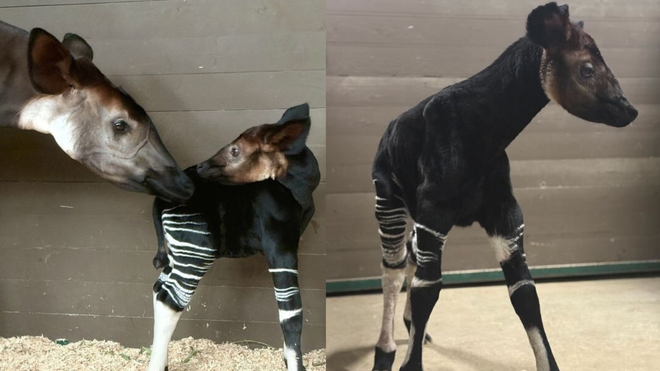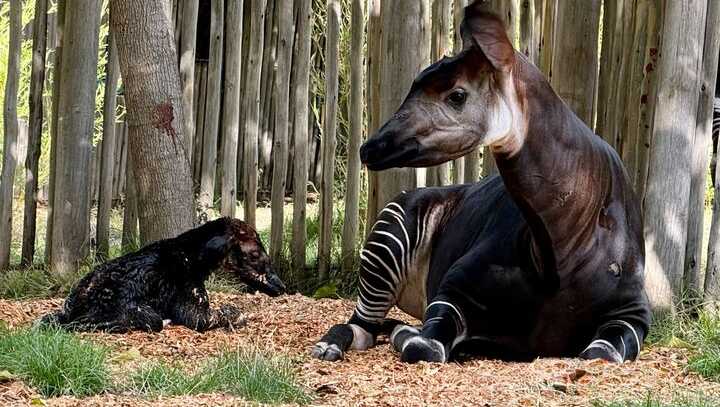Sacramento Zoo celebrates its first okapi birth, welcoming a male calf

Updated: 3:32 PM PDT Oct 13, 2025
It’s a boy! The Sacramento Zoo announced on Monday that its okapi Kivuli gave birth to a healthy male calf last week. The zoo said the Oct. 9 birth was the first okapi birth in the Sacramento Zoo’s history. The birth was also partially visible to guests in the side yard of the okapi habitat.Officials said Kivuli and the calf are both healthy, but the animal care team and veterinary staff will monitor them closely over the next few weeks. The focus of care will be on bonding, nursing and growth monitoring. Zoo officials said that within the Association of Zoos and Aquariums, there are fewer than 100 okapi across 27 institutions, making the birth a key contribution to conservation.In the wild, officials said okapi are endangered, with their population estimated between 10,000 and 15,000. Their primary habitat is the dense forests of central Africa. The Sacramento Zoo said the mother and calf will not be on exhibit while the calf reaches critical milestones in its growth. See more coverage of top California stories here | Download our app | Subscribe to our morning newsletter | Find us on YouTube here and subscribe to our channel
SACRAMENTO, Calif. —
It’s a boy! The Sacramento Zoo announced on Monday that its okapi Kivuli gave birth to a healthy male calf last week.
The zoo said the Oct. 9 birth was the first okapi birth in the Sacramento Zoo’s history. The birth was also partially visible to guests in the side yard of the okapi habitat.
Officials said Kivuli and the calf are both healthy, but the animal care team and veterinary staff will monitor them closely over the next few weeks. The focus of care will be on bonding, nursing and growth monitoring.

Zoo officials said that within the Association of Zoos and Aquariums, there are fewer than 100 okapi across 27 institutions, making the birth a key contribution to conservation.
In the wild, officials said okapi are endangered, with their population estimated between 10,000 and 15,000. Their primary habitat is the dense forests of central Africa.
The Sacramento Zoo said the mother and calf will not be on exhibit while the calf reaches critical milestones in its growth.
See more coverage of top California stories here | Download our app | Subscribe to our morning newsletter | Find us on YouTube here and subscribe to our channel

